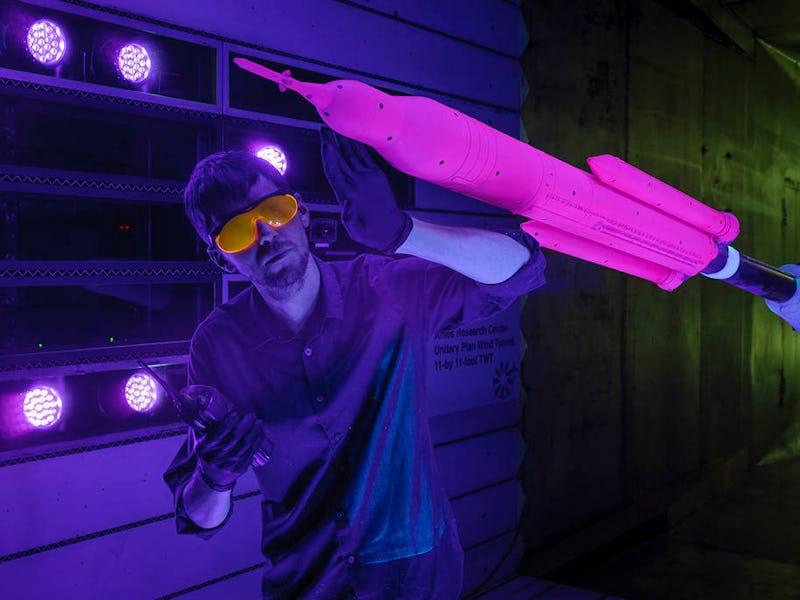SpaceX is about to do something NASA hasn’t done in over 40 years: send two people to go fly around the moon. But that doesn’t mean the government’s space agency is giving up on its plans for interplanetary travel.
In a statement last night, following SpaceX’s surprising announcement that it would send two private citizens to the moon and back, NASA both congratulated Elon Musk’s private spaceflight company and assured the public that no, it wasn’t going to toss all of its space-eggs into one basket.
“NASA is changing the way it does business through its commercial partnerships to help build a strong American space economy and free the agency to focus on developing the next-generation rocket, spacecraft and systems to go beyond the moon and sustain deep space exploration,” the statement reads.
Essentially, NASA says SpaceX’s developments are giving it time to work on the Space Launch System, the agency’s answer to SpaceX’s Falcon Heavy rocket and Dragon 2 capsule.
At the moment, NASA is still dependent on the Russian Soyuz capsule and launch system to get astronauts into space, so it’s in everyone’s best interest to have both a working Falcon Heavy and an operational SLS as the government and private entities venture further and further out into the solar system.
“NASA commends its industry partners for reaching higher,” the statement reads. “We will work closely with SpaceX to ensure it safely meets the contractual obligations to return the launch of astronauts to U.S. soil and continue to successfully deliver supplies to the International Space Station.”
Musk, for his part, also said his company’s achievements would not be possible without NASA’s full support.
The SLS is a massive rocket system derived from the system that launched the Space Shuttle out of the atmosphere. It’s estimated to have similar thrust to the Saturn V rocket, the most powerful launch vehicle NASA has used. Its primary payload will be NASA’s new Orion capsule, a highly-advanced spacecraft designed to carry astronauts into deep space.
The timeline for SpaceX’s moon mission is still a little fuzzy, but the hope is it will launch sometime after the company flies its first crewed mission to the ISS on behalf of NASA. NASA’s SLS is on a similar timeline, hoping to have its inaugural launch, named Exploration Mission 1, on September 30, 2018, which will launch the Orion spacecraft on a similar orbit of the moon before returning. But the Trump administration, which is reportedly interested in seeing NASA return crewed flights to the moon, creates a more confusing and unpredictable environment. It’s unclear as to how the SLS’s timeline will hold up. Still, with SpaceX and Boeing hopefully taking up the reins on resupplying and shuttling crew to and from the ISS, NASA says it’s devoted to funneling whatever resources it has over the next handful of years toward its own ways of getting humans off the planet.
